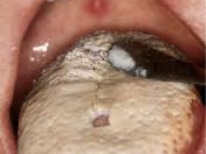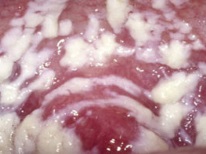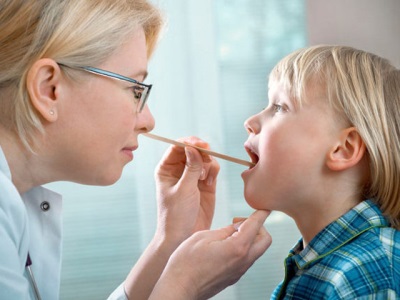Thrush in the baby’s mouth
Everyone is familiar with such a disease as thrush, because the risk of its occurrence is in nursing babies, and in any adult. People call it the inflammation caused by fungi, since one of the signs is a white patina. In childhood, thrush, which is one of forms of stomatitismost often appears in the mouth and its medical name is candidal stomatitis. How does the disease manifest itself in a child and how to cure it?
What are the symptoms
The main symptom of thrush in the mouth is the appearance in the mouth of areas covered with a whitish bloom. These areas itch and hurt, and if the plaque is removed, then under it you can notice the wound surface from which blood is released. Other symptoms of fungal stomatitis are:
- Complaints about pain in the mouth of the child, as well as burning and itching.
- Bleeding gums.
- Unpleasant smell and taste in the mouth.
- Increased body temperature (not all children).
The reasons
The appearance of thrush on the mucous membrane of the child’s mouth provokes candida fungi, which normally live on the skin and mucous membranes, but do not cause the disease. They are transmitted from one person to another by contact, as well as by airborne droplets. A child can get candida from parents, medical staff, close relatives and other people.
The activation of candida and the occurrence of stomatitis is caused by the following factors:
- Diseases of the digestive tract.
- Use of antibiotics or drugs that reduce immunity.
- Diabetes.
- Severe somatic diseases.
- Tooth decay.
- Poor oral care.
- Immunodeficiency.
Disease progression
The onset of the disease often goes away without symptoms, and redness appearing in the mouth may not bother the child. Later, these areas are covered with bloom, which hides ulcerative lesions. If you do not start treatment at this stage, the plaque spreads over a large area and causes great discomfort.
Forms
During fungal stomatitis in children there are three forms:
- Easy - there are few areas of inflammation, the plaque is easily removed, the general condition of the child is normal.
- Average - body temperature rises to 38 degrees, the child complains of discomfort in the mouth, inflammation occupies a large area.
- Heavy - the temperature can rise above 38 degrees, the plaque is removed with great difficulty, leaving the bleeding surface, affects not only the mucous membrane of the cheeks and tongue (inflammation covers the lips, tonsils, arch).
In addition, in children older than one year, in addition to the acute form, there is chronic candidal stomatitis, in which the child develops a light brown patina, the mucous membrane of the mouth dries out and during meals the child has a feeling of discomfort.
How to treat?
In eliminating fungal stomatitis, an important role is given to such actions:
- Reducing the pain of the elements of stomatitis.
- Creating an alkaline environment in the mouth in which the multiplication of fungi is impossible.
- Changing the nutrition of the child. Food should not be hot, not sour and not solid.
- Rinse the mouth.
- Use of antifungal medication.
- Stimulate healing.
What medicines are prescribed most often?
Among antifungal drugs, children over 3 years old are prescribed drugs based on nystatin or fluconazole.Most often, these are solutions that wash the oral mucosa three times a day, applying the drug to a cotton swab.
Folk remedies
The most effective and popular among folk remedies, the effectiveness of which is confirmed by doctors, is a solution of baking soda. A teaspoon of soda powder is dissolved in warm water (one glass), and then the mouth mucosa is moistened with gauze soaked in such a solution. You can also use this solution for rinsing.
In the absence of allergies for fungal stomatitis, it is often recommended to treat them with honey. Honey is diluted with warm water 1 to 2, the solution is moistened with gauze and wipe the oral mucosa.
Among other popular recipes against candidal stomatitis help:
- Calendula decoction.
- Infusion of Hypericum.
- Water diluted aloe juice.
What if the child is prone to allergies?
In the treatment of thrush in an allergic child can not use folk remedies. In addition to pro-fungal drugs, a special diet with a restriction of carbohydrate products and allergens is recommended for a child with allergies, and anti-allergic medicines are prescribed. The oral cavity can be treated with soda solution.
















